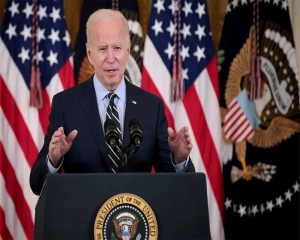Large-scale tree felling is starting to resemble a genocide. Greedy man may not sit peacefully till he has harnessed all natural resources for himself. Can India avoid this genocide?
The recent uproar over the felling of trees in Mumbai’s Aarey Colony area for setting up a metro car shed highlighted how India is taking the urban green canopy for granted. It was only due to the timely intervention of citizens that 2,500 trees escaped the axe. But sadly, by the time the Supreme Court (SC) intervened and put on hold any further deforestation, nearly 1,500 trees had already been cut and cleared. The fact that even the Bombay High Court refused to consider Aarey Colony as an urban forest reserve is not only distressing but also worrying as it may set a bad precedent. According to the United Nation’s (UN’s) urban forestry estimates, trees have excellent pollution combatting capabilities. A balanced concrete to tree cover ratio has the ability to bring down ambient urban temperatures by two to eight degree Celsius. A healthy urban tree cover can also reduce air-conditioning use by 30 per cent and bring down heating energy requirement by 20-50 per cent. A healthy, mature tree, for instance, has the innate capacity to absorb 150 kg of carbon dioxide and also filter harmful airborne pollutants including some fine particulate matter. Trees reduce cortisol levels in their immediate neighbourhood, thereby bringing down average stress levels. If given a fair chance, trees can really turn the tables on rising pollution levels. This is the reason why urban areas with green cover are better poised to deal with pollution levels as compared to industrial areas that have a high density of construction and a poor green cover.
Given the pollution fighting attributes of trees, it is advisable for cities to have at least 40 per cent green cover. This not only helps reduce pollution but also improves the quality of life. According to a study by the University of Illinois, people residing in high-density green areas have higher tolerance levels and low levels of fatigue.
Given what trees can do to fight pollution and improve human and animal health, it is shocking that in India we still cut them down in large numbers.
Tree felling to make way for large development projects and housing or commercial projects is a countrywide phenomena and in the national Capital alone, new Government complexes and residential projects are poised to take a toll on 14,000-16,000 mature trees.
This reflects the regressive mentality of all stakeholders and that includes even the most respected institutions as well as individuals of our nation. This needs to change by highlighting and creating awareness about the direct benefits trees bring to this world and all life on the planet. The authorities need to understand that erasing nature for urban development is an outdated approach and given the harmful impacts of climate change, it is also a very dangerous thing to do. The puzzling aspect of this is how the authorities are completely unwilling and oblivious to the latent possibilities of urban development that is in harmony with nature. There are many examples across the world where trees and heavy green canopy have been actively integrated into urban planning and made even better by including water bodies. This improves the livability quotient of the cities to unprecedented levels.
Worldwide there are 422 trees to a person, whereas India only has 28 trees per person. This disparity with our global counterparts is not only adversely impacting our life expectancy and quality of life but also resulting in the ambient temperatures climbing steadily. Problems like the ever-dwindling green cover, rising population, pollution and not enough new trees being planned and planted, besiege today’s environment. The cumulative impact of this is also increasing the disease burden of the urban citizen. The Government must take note of the rising health disorders arising out of pollution and related causes and take immediate measures to remedy the same. Increasing the urban green cover is one of them.
Planting of saplings in exchange for cutting down full-grown trees seems to be the newest way of cutting down trees in large numbers and getting away with it. Many institutions and individuals claim that double the saplings have been planted for the actual number of trees cut, but seldom does anyone specify how many saplings actually lived and whether those that had died were replaced immediately with fresh ones. Also, in order to be able to combat pollution effectively, a tree has to be mature (at least 10-years-old) and saplings cannot do the work of cleaning the air the way a mature tree can. These shortcuts mean that the country is losing its tree cover fast and is unable to replenish it in an effective manner. Moreover, as these saplings take 10 years to properly grow up and start helping to contain pollution, this means that we have to endure the absence of trees for at least a decade after trees are cut and the new saplings grow up. This gap is unacceptable and not in the best interests of both man and nature.
Large-scale tree felling is starting to resemble a genocide. Greedy man may not sit peacefully till he has harnessed all natural resources for himself. Can India avoid this genocide? That depends entirely on who is witnessing and appreciating the contributions of these silent warriors. It is high time that the common man took up the fight for their survival, as our own future is closely linked to them.
(The writer is an environmental journalist)

























